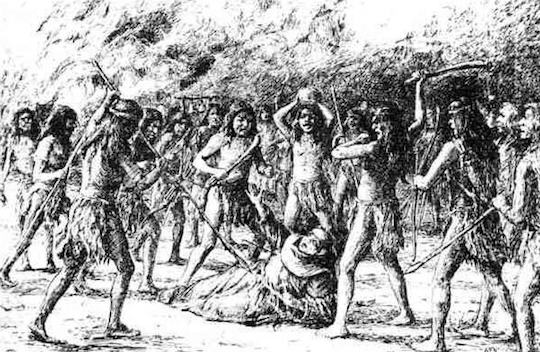In the spring of 1776, while revolution stirred on the East Coast, something quieter, though no less meaningful, was happening far in the West. A Spanish Franciscan missionary, Father Francisco Garces, was on his fifth and final journey into the heart of what is now California.
Guided by Native people and traveling by foot and mule, Father Garces came up through the Antelope Valley, tracing ancient indigenous trails through uncharted territory to Europeans. From there, he pressed on into the San Joaquin Valley, turned east and crossed the rugged mountains near Tehachapi, and continued into the dry interior, heading toward the Mojave River.
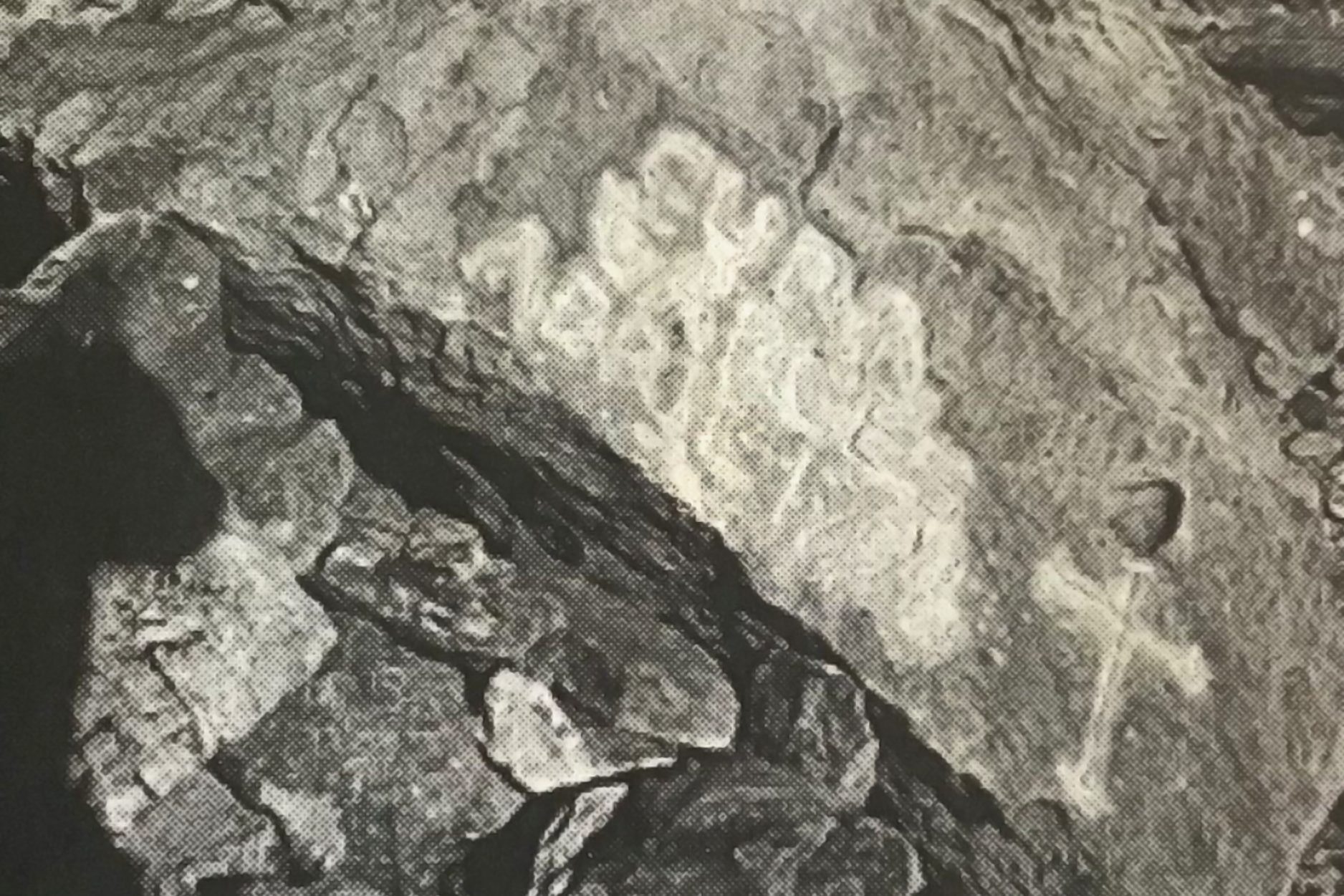
During this leg of the journey, near the base of Castle Butte, east of present-day California City, someone in his party left behind a quiet message. Carved into a large boulder was a simple inscription:
“Cura Garces – Abril 1776.”
A trace is left in stone to mark their passage through the high desert.
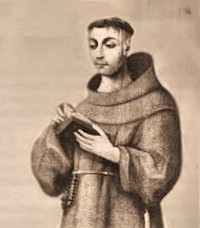
That rock sat in silence for more than 150 years. Then, around 1935, an old prospector pointed it out to a man named Mike Sanchez, but the story of the stone didn’t go far. Sanchez wasn’t much of a talker, and the tale faded.
Later, in 1963, local historian Glen Settle gave a talk at an elementary school in Lancaster. A teacher there told him about the rock. One of her students—Mike Sanchez’s son—had shared the story, and he even had a hand-drawn map.
Two years later, in 1965, Settle and several other members of the Kern Antelope Historical Society followed that map and found the rock. It had already suffered some vandalism, so the group relocated it to a safe location. They called in a local man with a truck and a sturdy A-frame hoist. With help from a few Air Force sergeants, they carefully transported the rock to the Tropico Gold Camp Museum in Rosamond.
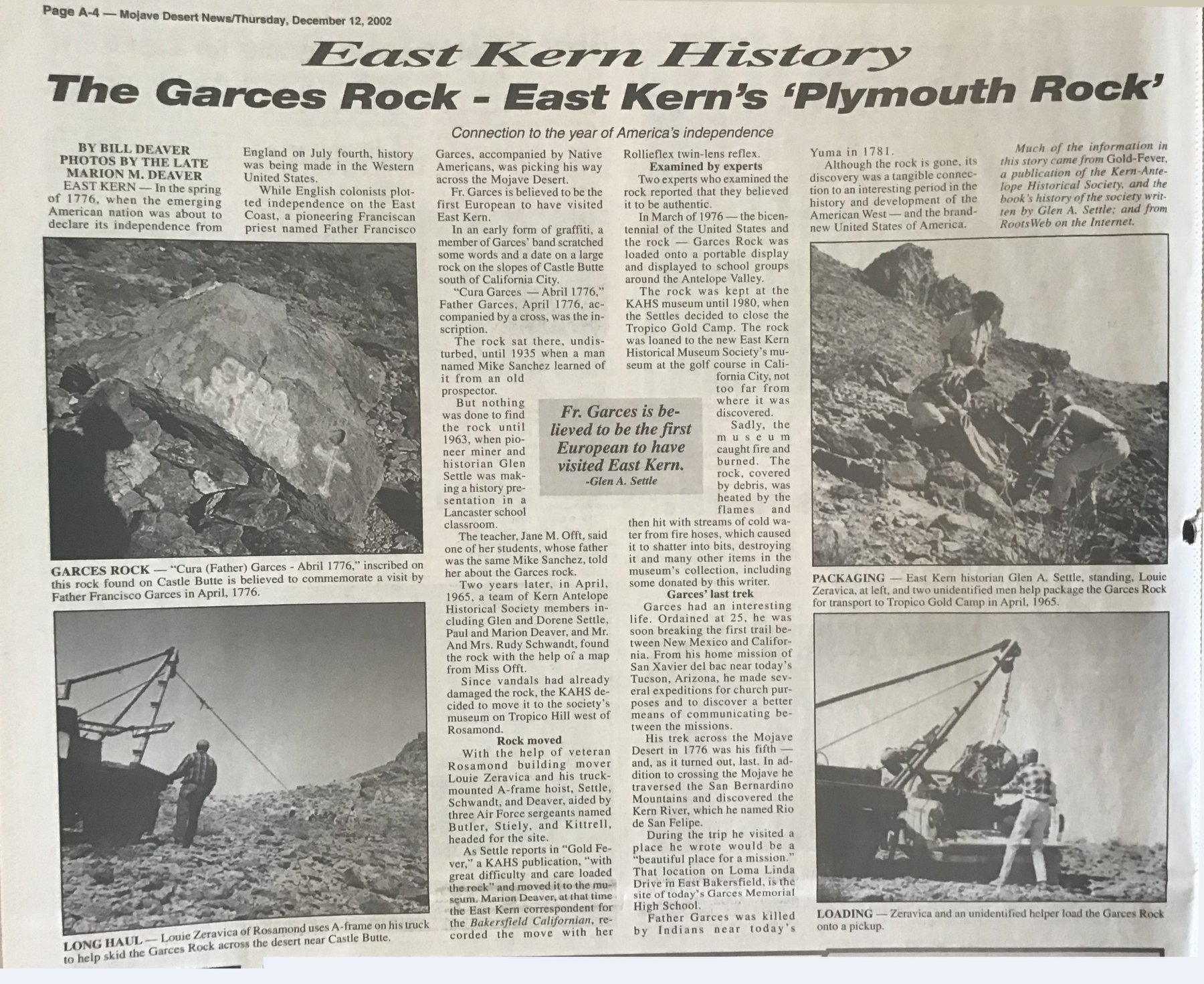
They brought in experts to study it. One priest, an authority on early Spanish California, confirmed that the words and cross were consistent with 18th-century Franciscan markings. The weathering on the carving was old, possibly as old as Garces’ journey.
During the 1976 U.S. Bicentennial, organizers mounted the rock on a traveling display. They showed it at schools and events throughout the Antelope Valley. It was a rare, tangible link between the Mojave Desert and the very year the United States was born.
In 1979, the rock was loaned to the new East Kern Historical Museum in California City, close to where it had first rested centuries earlier.
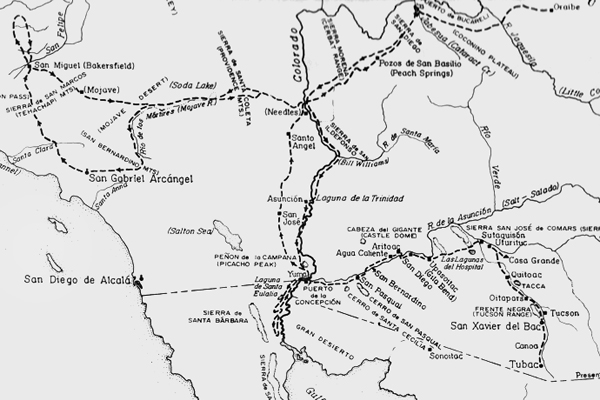
Then, tragedy struck in the dark hours of February 4, 1981. The museum caught fire. Local fire crews responded quickly, but upon arrival, the wooden structure was already fully engulfed in flames.
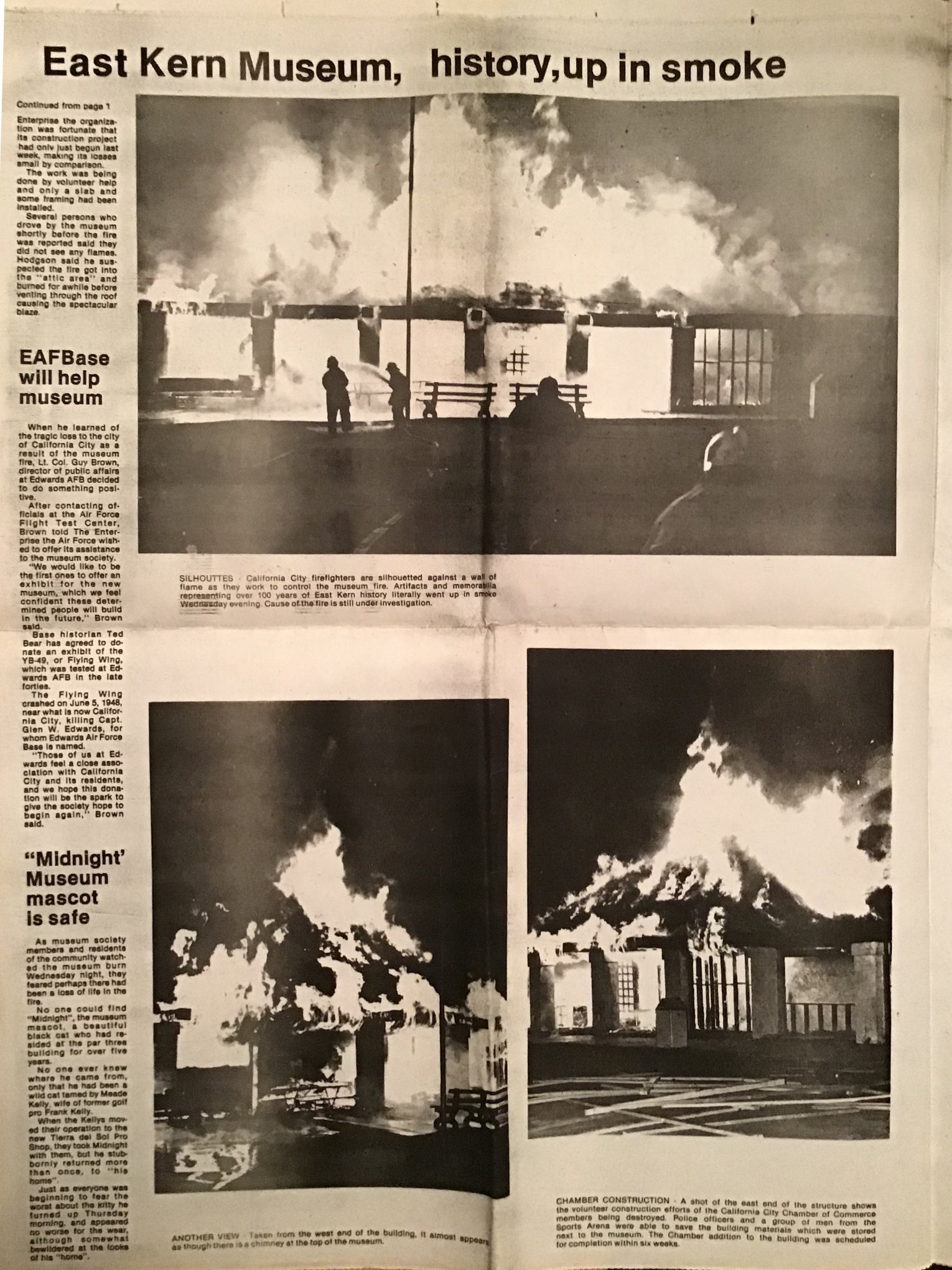
At first glance, the Garces Rock seemed to have survived the blaze. But it crumbled into fragments when someone gently touched it the next morning. The heat from the fire, followed by cold water from the hoses, had cracked and fractured the boulder beyond saving—even the carved inscription dissolved into dust.
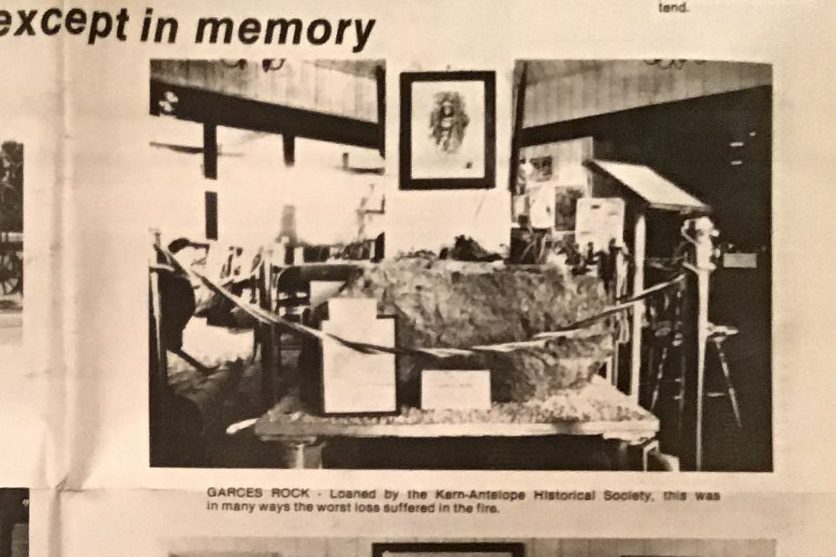
Firefighters did everything they could. There was nothing left.
What was lost that night wasn’t just a rock. It was a rare and quiet witness to a moment of deep historical significance—when a European missionary followed Native guidance across the mountains, valleys, and deserts of early California.
Father Garces didn’t live long after his desert crossing. He was killed near the Colorado River in 1781, near what is now Yuma, Arizona. But his name still lives on in places like Garces Memorial High School in Bakersfield—built near the spot he once called a “beautiful place for a mission.”
Though the rock is gone, the story remains. It’s kept alive by teachers, old-timers, maps passed down, and folks who care enough to remember. It’s proof that sometimes the desert whispers back—and if you listen closely, you can still hear the footsteps of history echoing through the sand.
